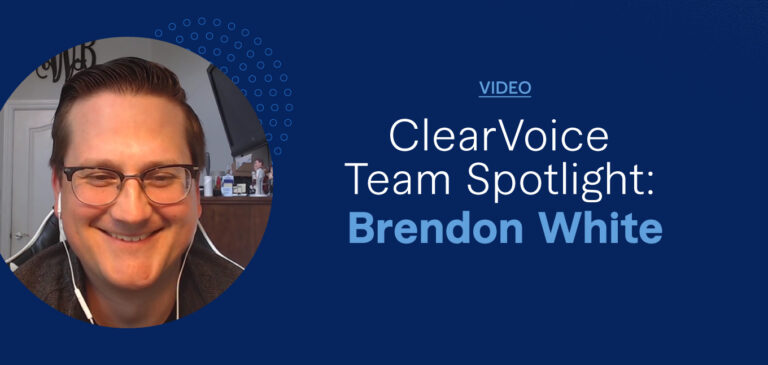What is content syndication?
Content syndication is the process of taking a blog post, article, infographic, video, or any other kind of content you’ve already published and republishing it on other third-party websites.

It’s similar to the way a television series enjoys a first run on a network but then, after a point, goes into syndication on other channels. In this case, the TV series is your content, and the “other channel” is a different website, usually one with an audience profile that shares certain key demographics with yours. These partners display your content alongside theirs, allowing you to reach new readers or viewers.
However, it’s important to note that because you share your content with others, you are potentially diluting your control over its distribution and SEO impact. It’s crucial to select your syndication partners carefully. You will want to ensure proper attribution and backlinks to your original content and consider any potential conflicts with exclusivity agreements.
Why is content syndication so important?
One of the top challenges content marketers and publishers identified across many niches is finding or creating enough informative content to publish to keep the audience engaged.
Content syndication helps build your audience and is a great top-of-funnel (TOFU) strategy to boost both organic and referral traffic for both sites. Syndication can also lead to a significant uptick in reviews and product coverage. Meanwhile, the republishing site gets access to fresh, authoritative, and entertaining content for its readers, who constantly crave it. Everyone benefits — the syndicating site, the republishing site, and their respective audiences.
SEO Considerations in Content Syndication
For years, we’ve been warned by SEO experts that duplicate content can hurt our content marketing work. Google may not directly penalize websites for duplicate content, but posting two pages with the same content won’t help your SERPs or SEO results.
Syndication poses no duplicate content issues as long as you follow a few simple rules:
- Make it clear to readers and search engines that the content they’re looking at is syndicated.
- Provide the original link in the syndicated version. That way, you always give readers and search engines a path back to the primary source.
- Ideally, get the syndicator — that is, the other website that’s now publishing your syndicated content — to include what’s known as a canonical link, which is essentially a way to let Google know which URL you want it to “count” for SEO purposes. This is accomplished through the use of the rel=canonical tag.
- Ask the syndicator to use a no-index tag telling Google and other search engines not to index that page.
Ways to Syndicate Your Content
While some sites suggest that you can DIY content syndication through sites such as Medium or LinkedIn, the content you republish is still associated with your brand identity. The audience is your audience and is often attracted to your content on the strength of that reputation. However, the power of syndication is how it amplifies your content, broadens your reach, and strengthens your brand awareness.
A paid platform is a popular choice for brands that have adopted a syndication strategy. Several companies can help you implement an effective program targeting the right sites with strong content to attract more users to your brand.
Carefully evaluate the specifics of the platform you choose to work with before you enter into a binding agreement. Also, be sure to look at the reported data and how often you’ll get those reports. This will help you evaluate how well this syndication endeavor is working.
Best Practices for Strategic Use of Content Syndication
Like many digital marketing strategies, content syndication can get complicated. Implement the following best practices for a smoother experience as you experiment and determine which tactics work most effectively for your brand.
Pinpoint your target audience
Defining your targeted client or customer personas is one of the highest ROI activities to invest your brand’s valuable resources. The people who match your customer personas will align with your buyer journey from the first step, so content that speaks clearly to them has a head start.
Choose the right content
Not every piece of content you labor over is well suited to syndication. The blog posts, infographics, videos, or other content will perform well in syndication, depending largely on your marketing goals. Avoid syndicating self-aggrandizing or overly promotional content. It doesn’t play well on other websites, as it often comes across as self-serving.
Select the right sites
You want to pair your content with a site that gets strong traffic with users who match your target audience. Seek out high-authority sites with larger audiences who can lend some of that perceived expertise to you through your syndicated content.
Avoid These Syndication Mistakes
Don’t jump in blindly
Content syndication isn’t well served by throwing a lot of content spaghetti against the wall to see what sticks. Testing out multiple channels at a time is fine as long as you can adequately track and monitor your results on each.
Don’t over-rely on audience filters
One of the best things about robust syndication platforms is the targeting filters they offer. It might be tempting to narrowly define your audience by selecting a geographical location, company size, or even a specific job title. Remember, the more targeting filters you choose, the higher your cost-per-lead (CPL) will be, which may ultimately diminish your ROI.
Ensure your lead capture and follow-up protocols are strong.
Your best content syndication efforts are only as effective as your lead generation and follow-up. The buck doesn’t stop with generating and capturing the lead. You will need a strong habit of following up quickly after catching the information to make it worthwhile.
Syndication Can Work for You
Before you can get into syndication, you will need high-quality content. Get informative, authority-building blog posts created for your brand by talking to a content specialist at ClearVoice today.






